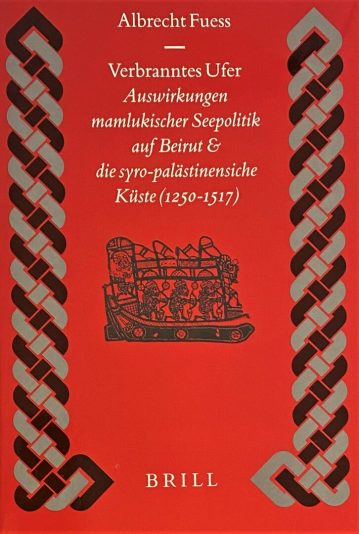Verbranntes Ufer: Auswirkungen mamlukischer Seepolitik auf Beirut & die syro-palastinensische Kuste (1250-1517).
Fuess, Albrecht.
Synopsis
Contents: Maritime Politics of the Mamluks: The Muslims and the Eastern Mediterranean before the Mamluks; Mamluks and Sea; Mamluk alternate routes to sea defense; Approaches that could have been pursued further; Blind in one eye: reasons for Mamluk “weakness in the sea”; History of the Syro-Palestinian coast in the Mamluk period (1291-1517): The Syro-Palestinian coast before 1291; Coastal Tales 1291-1520; Coastal administrative structures: Central or regional: Who is in charge of the coast?; Topography of Beirut 1291-1517: “Without Moors”: Topography of Beirut in Mamluk times; Demography and leisure time behavior: Christians and Muslims: reflections on the population structure of Beirut; Fireworks and Legends of Saints: Leisure Activities on the Mamluk Coast in Mamluk Period; The Europeans and the Syro-Palestinian Coast: Between Papal Boycott and Profit: Trade on the Syro-Palestinian Coast in the Mamluk Period 1291-1517; People like them: The Franciscans in Beirut in Mamluk times; Holla, hylla, lalla: Pilgrims in Mamluk kingdom; The Coast and the Crusaders’ Possible Return: Are They Coming Back? Were local residents afraid of another Crusader entrenchment on the coast?; closing thoughts
Contents: Seepolitik der Mamluken: Die Muslime und das östliche Mittelmeer vor den Mamluken; Mamluken und Meer; Mamlukische Alternativwege zur Seeverteidigung; Ansätze, die man weiter hätte verfolgen können; Auf einem Auge blind: Gründe mamlukischer “Seeschwäche”; Geschichte der syro-palä stinensischen Küste in mamlukischer Zeit (1291-1517): Die syro-palä stinensische Küste vor 1291; Küstengeschichten 1291-1520; Administrative Strukturen an der Küste: Zentral oder regional: Wer hat an der Küste das Sagen?; Topographie Beiruts 1291-1517: “Ohne Mauren”: Topographie Beiruts in mamlukischer Zeit; Demographie und Freizeitverhalten: Christen und Muslime: Überlegungen zur Bevölkerungsstruktur Beiruts; Feuerwerk und Heiligenlegenden: Freizeitverhalten an der mamlukischer Küste in mamlukischer Zeit; Die Europäer und die syro-palästinensische Küste: Zwischen Papstboykott und Profit: Handel an der syro-palästinensischen Kü ste in mamlukischer Zeit 1291-1517; Die Menschen mögen sie: Die Franziskaner in Beirut in mamlukischer Zeit; Holla, hylla, lalla: Pilger in Mamlukenreich; Die Küste und die mögliche Rückkehr der Kreuzfahrer: Kommen sie zurück? Hatten die lokalen Bewohner Angst vor einem erneuten Festsetzen der Kreuzfahrer an der Küste?; Schlussgedanken.






